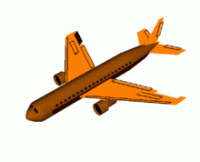








An aileron is a hinged flight control surface usually forming part of the trailing edge of each wing of a fixed-wing aircraft. Ailerons are used in pairs to control the aircraft in roll (or movement around the aircraft's longitudinal axis), which normally results in a change in flight path due to the tilting of the lift vector. Movement around this axis is called 'rolling' or 'banking'.
The aileron was first patented by the British scientist and inventor Matthew Piers Watt Boulton in 1868, based on his 1864 paper On Aërial Locomotion. Even though there was extensive prior art in the 19th century for the aileron and its functional analog, wing warping, in 1906 the United States granted an expansive patent to the Wright Brothers of Dayton, Ohio for the invention of a system of aerodynamic control that manipulated an airplane's control surfaces.Considerable litigation ensued over the legal issues of lateral roll control, until World War I compelled the U.S. Government to legislate a legal resolution.
In the present day, ailerons have become highly refined in their designs and performance with multiple types created to suit the various fixed wing aircraft in existence.
Boulton had described and patented ailerons in 1868 and they were not used on manned aircraft until they were employed on Robert Esnault-Pelterie’s glider in 1904,although in 1871 a French military engineer, Charles Renard, built and flew an unmanned glider incorporating ailerons on each side (which he termed ‘winglets’), activated by a Boulton-style pendulum controlled single-axis autopilot device.